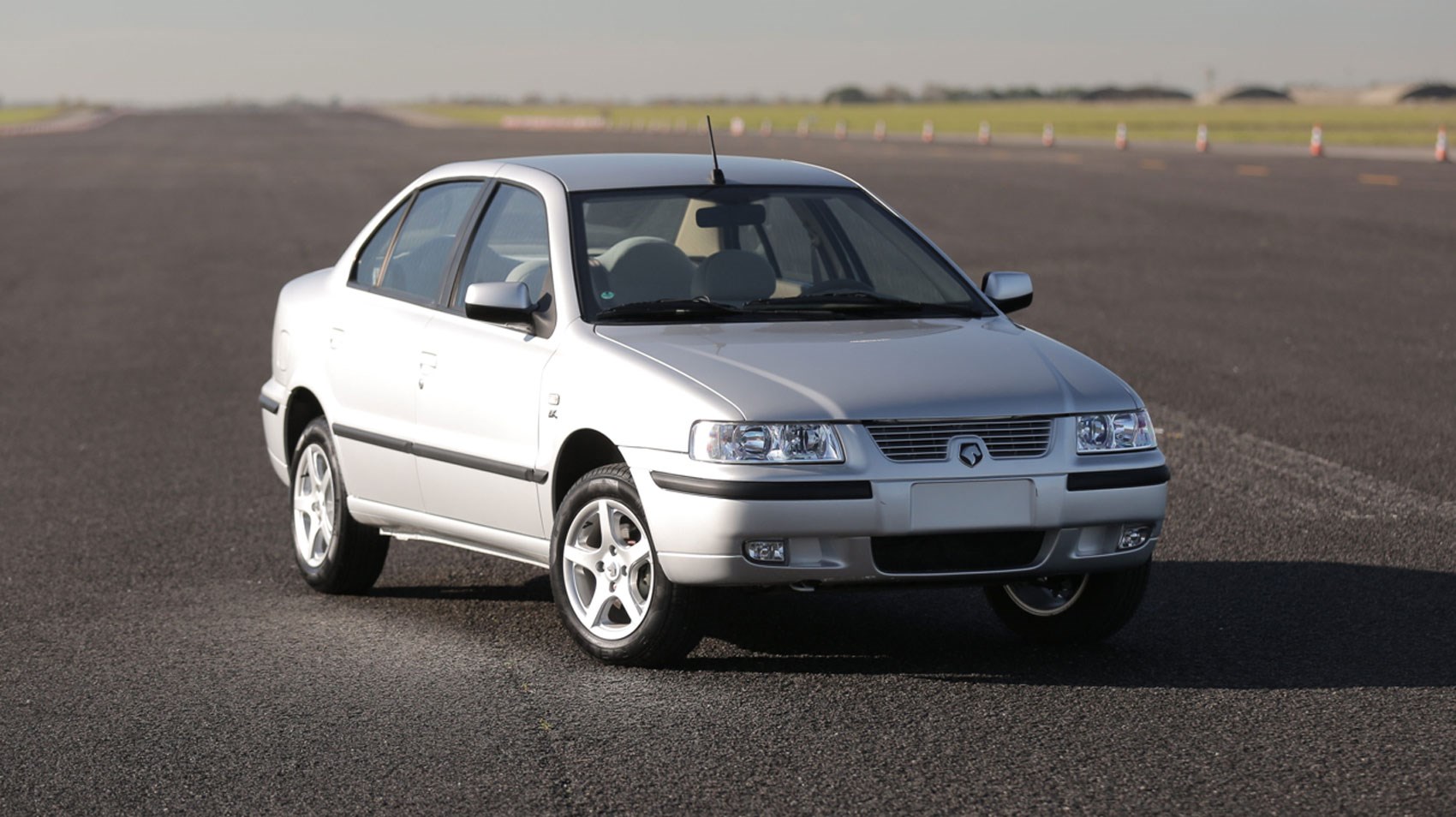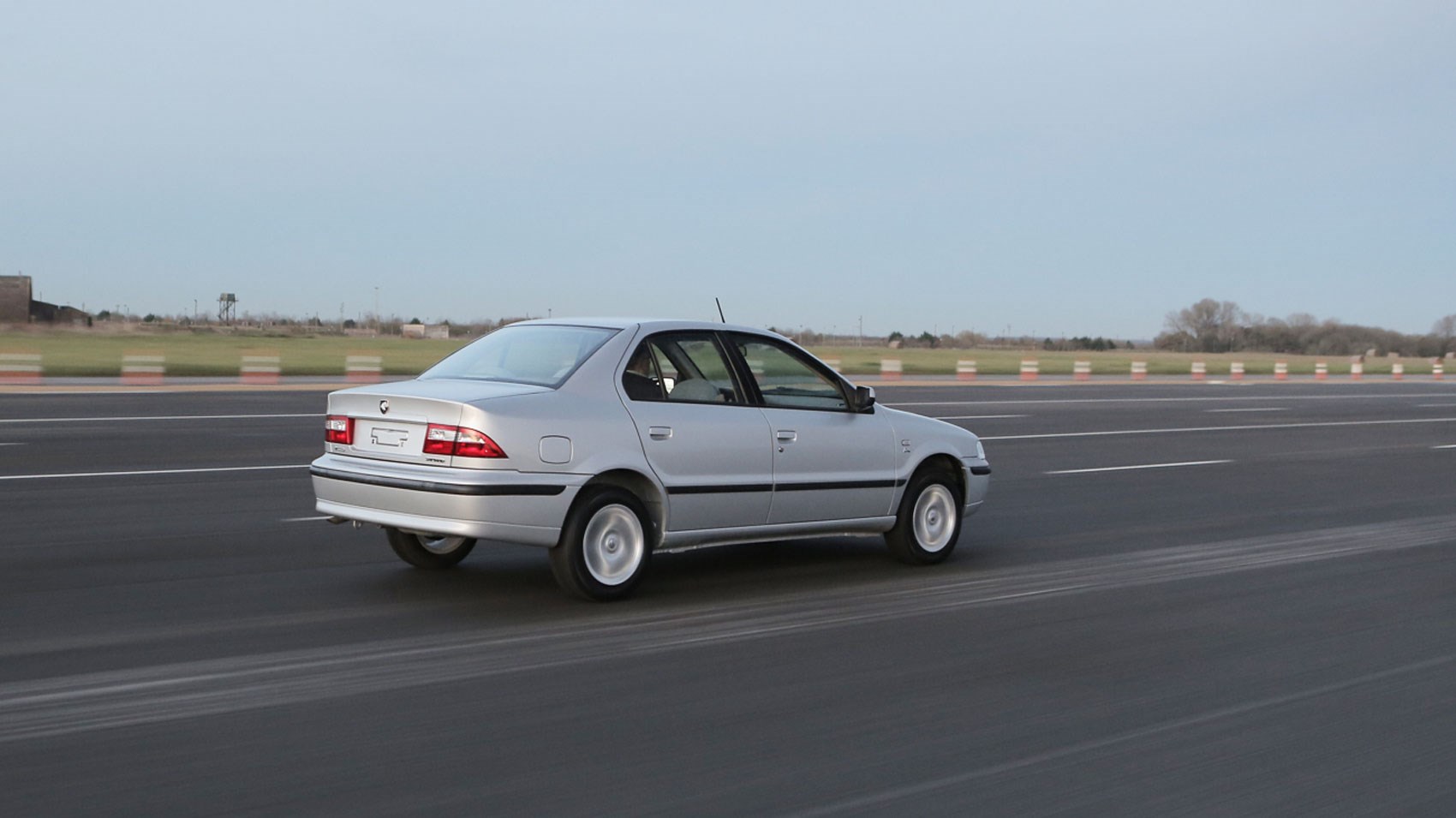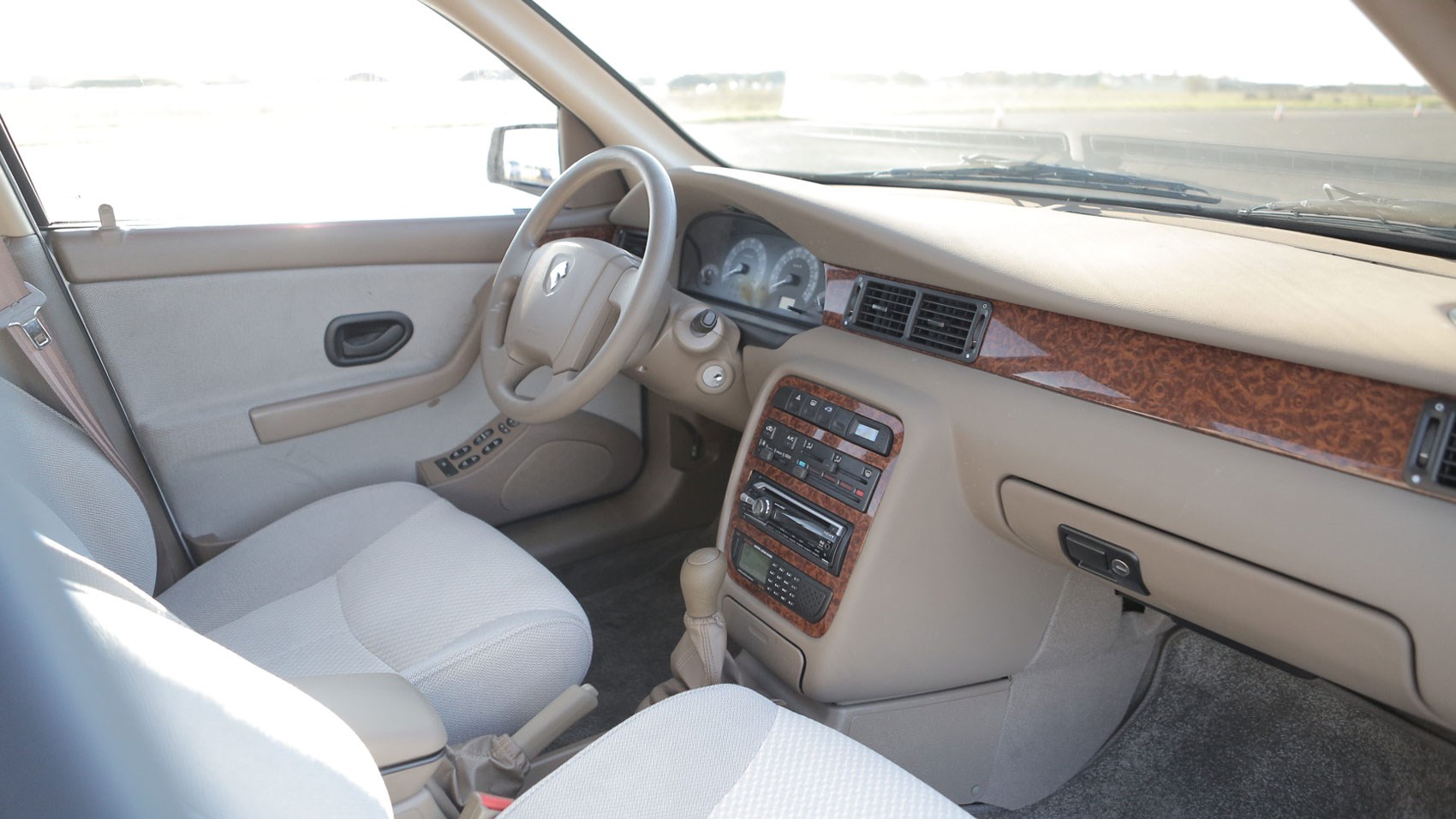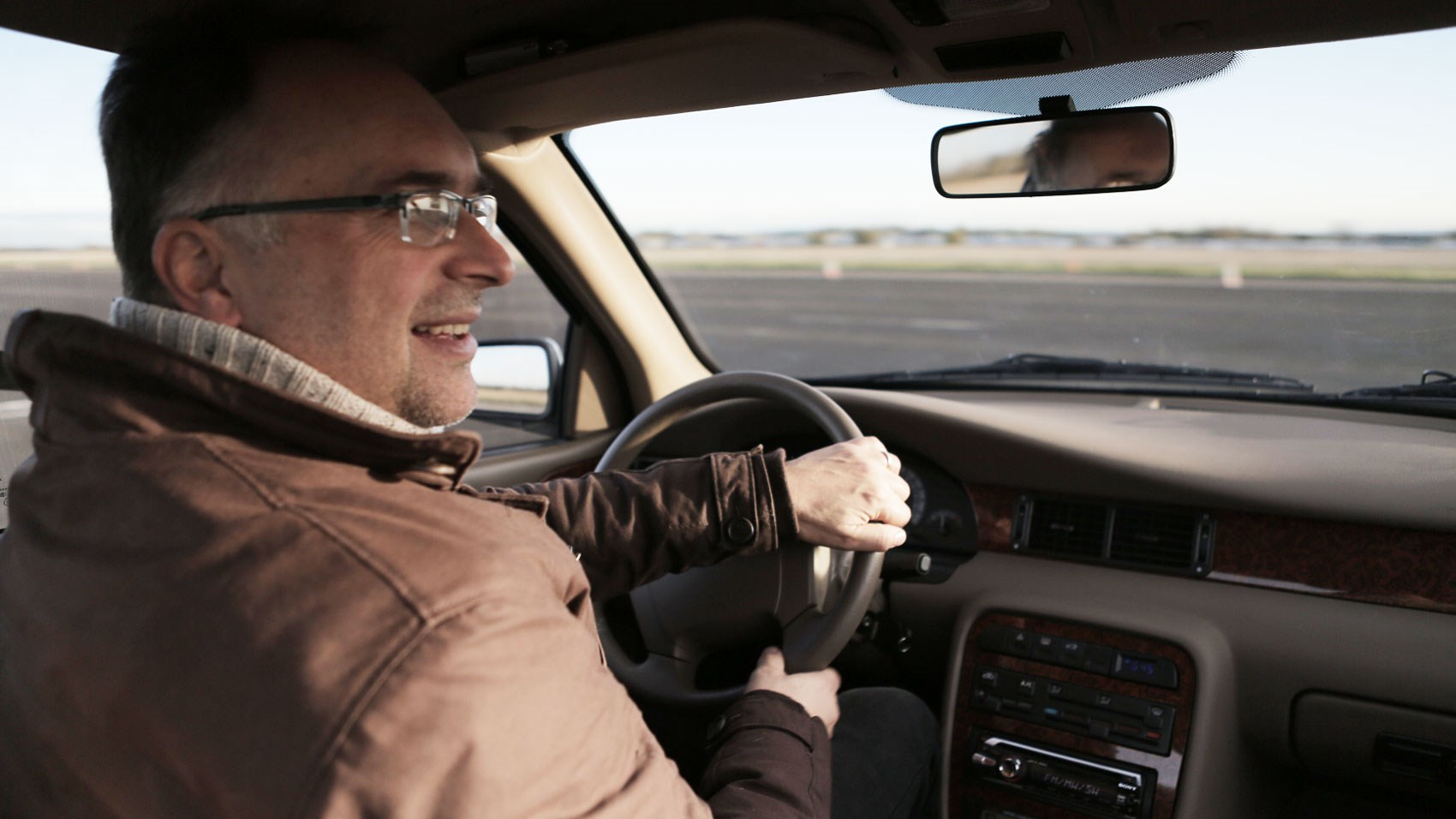► Iran’s national car driven
► Based on old Peugeot 405
► Does it make sense in the UK, in 2018?
First-world problems. It’s a phrase that gets used a lot these days to deflate a spoilt, fussy, ungrateful attitude, a loss of perspective about what’s really important in life.
Car people are forever walking into this trap, car journalists more than most – after all, it’s our job to assess the relative quality of a car’s cupholders and heated seats. So it’s both humbling and refreshing now and again to drive a car that’s not from the first world – maybe a hire car on holiday or, in this case, on an airfield in Oxfordshire.
This car is an IKCO Samand, and it will be familiar to you if you’ve spent any time in Iran, or if you go around gatherings of ’80s Talbots and ’90s Peugeots with your eyes half shut.
The Samand is often called Iran’s national car, but it’s built in several countries and sold throughout much of the developing world. We’re driving it to help out our mates at Manoto TV, who are keen to see how it stands up when wrenched 3500 miles out of its usual context of daily transport for middle-class families in Tehran; we’re more interested in seeing what light it shines on the progress made by the manufacturers of cars more familiar in Western Europe.
Why haven’t I seen one of these before?
Iranian cars don’t get sold in Western Europe but Iran has, on occasion, vied with Turkey for the title of the Middle East’s most prolific exporter of cars, with the odd hiccup caused by revolution, international trade sanctions etc.
The industry dates back decades. It suffered massive setbacks when the Shah was toppled and the Ayatollahs took control at the end of the ’70s. But it rebuilt and grew, often working in partnership with outside companies including Peugeot and Renault, in a good year building a million or more cars and trucks.

In recent years there have been two main Iranian companies, Saipa (founded 1965) and the bigger Iran Khodro (founded in 1962), known as IKCO. And it was IKCO that hit the jackpot with first the Peykan (based on the Hillman Hunter) and more recently its 2005-on successor, the Samand, which draws to an extent on the Peugeot 405, and indeed this version has a Peugeot engine, but is largely IKCO’s own work.
So what’s it like to drive?
Take the Samand out of context and it can seem crude, slow and unsophisticated. Viewed next to, say, a 2017 VW Golf it might as well be from a different planet. If you accelerate and corner with brio on a wide, well surfaced airfield the Samand seems hesitant and wobbly. However you drive it, the gearchange really isn’t very good.

But bear in mind that this is a car built principally for a region where the roads are pretty terrible – unpaved tracks, neglected tarmac – and then the soft, long-travel suspension and high ground clearance are virtues, not vices. When you remember that the pump fuel available on home turf can’t be relied on for its consistency, purity and potency, then an engine with a bit of slack built in is more desirable than a highly-strung unit tuned for peak efficiency in optimal operating conditions.
It reminded me a lot of a car I used to own, an early-’80s Talbot Solara 1.6. (This is probably no coincidence, as Talbot was part of the same group as Peugeot at the time.) It was plain, it was missing a few bits, and it wasn’t built for speed. But like the Samand, the Solara was very easy to get on with, rode well and held a line with reassuring predictability. On a budget that had room for nothing more ambitious than petrol and at a pinch screenwash, the Talbot just kept on going until eventually it ran out of brake pad. I suspect that a Samand would be just as idiot-proof.
What about the interior?
You’ve come to the wrong place if you’re expecting much in the way of electronic driving assistance, or even decent synchromesh on the gearbox and sophisticated damping on the suspension. But what you do get is an interior that’s reasonably roomy, with some decent materials, and a pleasing simplicity. That’s not meant as a backhanded compliment – it really is good to drive a car isn’t cluttered with superfluities.

It means you can focus on the essentials: wheel, brake, throttle, clutch, gearchange. The fact that none of those controls is particularly slick or precise in the Samand is a shame but hardly a crisis.
In our car, there was a mixture of brittle plastic, soft fabric and shiny woody stuff. Not, on the whole, particularly desirable, but sufficiently well assembled to avoid excessive creaking and groaning.
There’s a key, not a starter button. A handbrake, not a parking button. A radio-CD-MP3. And there’s also a big, prominent alarm unit, with a keypad all of its own.
It’s a little too easy to leave the handbrake part engaged as you pull away, prompting a friendly reprimand from a Middle Eastern-accented voice; I suspect the novelty would soon wear off.
Verdict
I enjoyed driving the Samand, and I admire many things about it. Am I volunteering to send myself back to the automotive stone age? No. The first-world advances made in every element of the car maker’s art have been worthwhile; a Golf is a far superior car, be in no doubt about that.
Once you get used to features such as ABS, traction control and relative newcomers like active cruise control you don’t want to surrender them. But turn the clock back 30 years – when the Samand would have seemed modern in the UK – and you’ve got something that provides comfortable, reliable, safe family transport.

There’s plenty of fault to be found with the Samand – some of it easily remedied, but much of it intrinsic to a car based on an old design and built with an eye on the need to keep purchase and running costs down. It wouldn’t do well in Euro NCAP crash tests and would give EU emissions testers a fit of the vapours.
Recent history shows that the Iranian car industry sells a lot more cars when the country is going through periods of relative peace, allowing it to invest in R&D and keep evolving the products. Pininfarina has been involved in developing some new models, and there’s been a big push to improve crash protection and emissions.
Might we be buying Iranian cars any time soon? Probably not. But it’s not inconceivable that while the big names are throwing all their resources at electrification and automation, a partnership involving IKCO could ‘do a Dacia’ and plug the gap at the bottom of the market, where there’s untapped demand for affordable, basic cars.
Fancy a bargain car you can get in Europe? Read our Dacia reviews